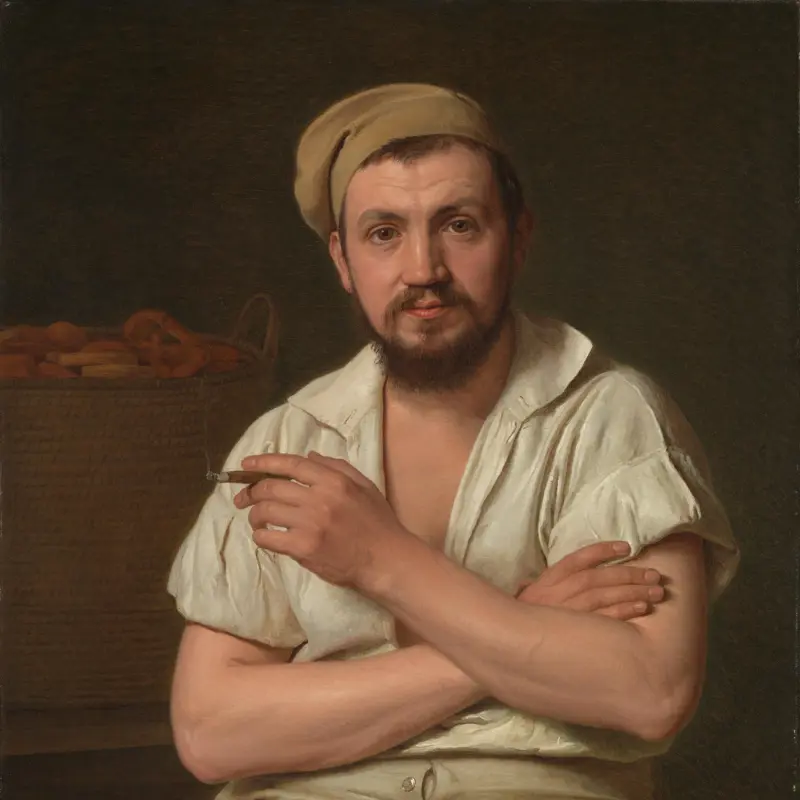Christen Købke, 'The Northern Drawbridge to the Citadel in Copenhagen', 1837
About the work
Overview
Located just outside Copenhagen, the Citadel (Kastellet) was a former military fort where Christen Købke and his parents lived from 1819 to 1833, although Købke often returned there to paint. He painted this view in 1837, possibly for his mother as a souvenir of their former home.
This picture shows a drawbridge (that no longer exists) outside the north gate of the Citadel, which crosses a moat to a guardhouse. Købke made a number of preliminary sketches and an oil study on location before working up the final painting in his studio. Bathed in an evening light, with a hint of pink in the sky, the view is suffused with tones of the complementary colours red and green.
The accurate rendering of the intricate manmade structure recalls the work of Christoffer Wilhelm Eckersberg, his teacher at the Royal Academy of Fine Arts in Copenhagen, but Købke is also expressing nostalgia for the place where he grew up.
Key facts
Details
- Full title
- The Northern Drawbridge to the Citadel in Copenhagen
- Artist
- Christen Købke
- Artist dates
- 1810 - 1848
- Date made
- 1837
- Medium and support
- Oil on canvas
- Dimensions
- 44.2 × 65.1 cm
- Inscription summary
- Signed; Dated
- Acquisition credit
- Bought, 1986
- Inventory number
- NG6507
- Location
- Room 39
- Collection
- Main Collection
- Frame
- 19th-century Danish Frame (original frame)
Provenance
Additional information
This painting is included in a list of works with incomplete provenance from 1933–1945; for more information see Whereabouts of paintings 1933–1945.
Text extracted from the National Gallery’s Annual Report, ‘The National Gallery Report: January 1985 – December 1987’.
Exhibition history
-
2010Christen Købke: Danish Master of LightThe National Gallery (London)17 March 2010 - 13 June 2010National Galleries of Scotland4 July 2010 - 3 October 2010
Bibliography
-
1986G. Fogg and L. Berg (eds), Art at Auction: The Year at Sotheby's 1985-86, London 1986
-
1988National Gallery, The National Gallery Report: January 1985 - December 1987, London 1988
-
1992S. Schwartz, Christen Købke, New York 1992
-
1993K. Monrad, The Golden Age of Danish Painting (exh. cat. Los Angeles County Museum of Art, 24 October 1993 - 2 January 1994; Metropolitan Museum of Art, 13 February - 24 April 1994), New York 1993
-
1996H.E. Nøwegärd-Nielsen, Christen Købke (exh. cat. Statens Museum for Kunst, 10 February - 5 May 1996), Copenhagen 1996
-
2001
C. Baker and T. Henry, The National Gallery: Complete Illustrated Catalogue, London 2001
About this record
If you know more about this work or have spotted an error, please contact us. Please note that exhibition histories are listed from 2009 onwards. Bibliographies may not be complete; more comprehensive information is available in the National Gallery Library.


